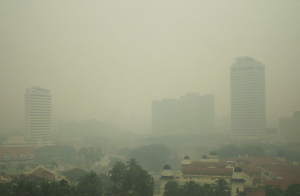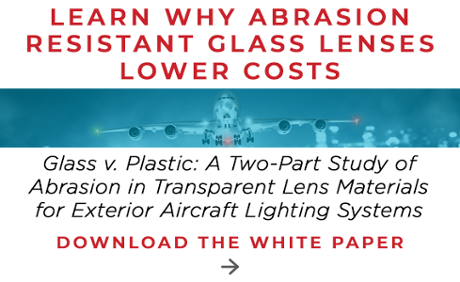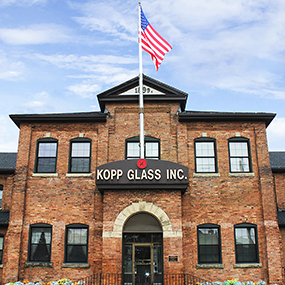Exterior lights, whether on a jet, runway, or cell phone tower, must live up to high expectations. They alert pilots of obstacles and safely guide them to the runway. It’s critical that the light system provide consistent transmission through normal and adverse conditions. Exterior lights are exposed to harsh conditions like heavy smog, acid rain, and salt-fog that abrade the lens. Over time, this abrasion can impact transmission and without replacement – decrease visibility and potentially create a safety hazard.

The pressure to create cheaper, lighter aircraft is driving engineers to explore and adopt new technologies and materials that will help to reduce fuel consumption. In exterior lighting applications, polymers are sometimes used because of their lighter weight; however it comes with some serious performance tradeoffs which have the potential to eliminate any possible weight savings.
In response to the increased interest in polymeric materials for use in exterior aircraft lighting applications, the SAE Aerospace lighting technical committee is drafting a recommended practice for the design and maintenance of plastic exterior lighting that recommends designing the light system to compensate for degraded lens output. This means that the design must allow for a 20-40% loss in transmission by actually using a higher wattage incandescent bulb, more LEDs, or driving the existing LEDs harder, requiring more power. They also recommend more frequent inspections and maintenance replacements if the lens exhibits crazing, cloudiness, cracking, blisters, peeling, flaking, or discoloration.
Instead of designing a light system that must compensate for drastic losses in transmission, another approach is to choose a material that can withstand these harsh environments. Lighting engineers who incorporate glass into their designs can depend on its durability and consistent transmission.
Testing Glass Abrasion Resistance
The preferred glass for aerospace applications is borosilicate: it is chemically and mechanically durable; resistant to extreme thermal cycling; and it is UV stable with no degradation or yellowing.
Resistance to abrasion is crucial due to the harsh, abrasive climates aircrafts are routinely exposed to. Borosilicate glass derives superior abrasion resistance from strong ionic bonding that results in a strong, interconnected atomic glass network. Some phase separation between the boron and silica glass phases helps to create a stronger glass network and ultimately a harder surface that is able to resist abrasion.
We routinely test our product’s ability to withstand impact, but we wanted to understand how our glass held up when exposed to abrasive materials for extended amounts of time. In the video below, we performed two abrasion tests to show the difference in abrasion resistance between borosilicate glass and different polymeric materials.
Taber Abrasion Wheel Test
The Taber Abrasion test method used two Taber CS-17 abrasive wheels to abrade the surface of a borosilicate glass lens and a hard-coated polycarbonate lens. Abrasion is simulated by the rub-wear action that is produced by contact of the test specimen against the sliding rotation of the abrasive wheel. As the turntable rotates, the wheels are driven by the sample in opposite directions along a horizontal axis displaced tangentially from the axis of the sample. One abrading wheel rubs the specimen outward toward the periphery and the other, inward toward the center. The wheels traversed a complete circle on the specimen surface, revealing abrasion resistance at all angles relative to the weave or grain of the material.
The results revealed that the average transmission for abraded borosilicate glass is approximately 15% higher than the average transmission of abraded hard-coated polycarbonate.
Falling Silicon Carbide Abrasion Test
We next tested acrylic and glass lenses using a falling silicon carbide abrasion test. Referencing ASTM D968, we funneled 32L of 90 grit silicon carbide onto the lenses from a 4 foot height. We conducted several tests on glass and acrylic lenses of varying thicknesses, contours, and compositions. In all of the tests, the glass lens clearly outperformed their acrylic equivalents and exhibited little to no surface abrasion.
Lowest Total Cost of Ownership
Over the last few years there has been growing confusion about how and when glass lenses should be used in exterior aircraft lighting applications. While weight reduction efforts may save jet fuel, lightweight polymers require incessant, costly maintenance and replacement in order to maintain proper light transmittance.
When it comes to exterior aircraft lenses, polymers may weigh less but glass is able to resist abrasion and transmit at consistent outputs over extended periods of time. This ability provides the lowest total cost of ownership to those who bear the maintenance burden.


